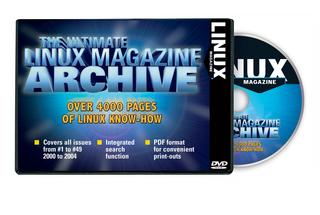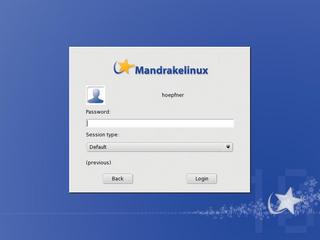
Write access |
Though that "old" stuff will be/is available on the net it sure is tempting to buy Linux Magazine issue #52 / March with the Archive DVD. The cover says the Archive covers #1-#49 but inside your magazine you speak of only last year's issues. Now what exactly's on the DVD?

Ard Sierhuis, by email
In fact, the DVD covers all Issues from #1 to #49 - all Linux Magazine articles from the years 2000 to 2004. The wrong description on the DVD pages goes down to the fact that it was written before the actual DVD contents were composed. Sorry for the mistake!
I was doing so well. My old laptop had just been repaired under warranty. I booted from the Linux Magazine Mandrakelinux DVD (Issue #51). I installed Mandrakelinux, and everything was going according to plan, but the installation finished in local host login. I log in using my login password, then I get the prompt (dave@localhost)$_ I have re-read the installation instructions, and I can't find the answer anywhere.
Dave Macdougall, by email

So far, you are in console mode. You need to configure your graphical system and let it run by default on bootup.
After login (dave@localhost)$_), please start the drakconf tool by typing in drakconf and pressing the return key. You need to go to something like Display configuration / Settings. For a CRT try 1024 * 768; if you have a TFT, you can use its native resolution.
Under Options please confirm GUI at bootup. Confirm everything with the return key. You can move through the menu with the tab key.
When you are finished, type reboot.
I was very interested to read the editorial "50 and beyond" in Linux Magazine Issue 50 / January and to hear about how your family of magazines shares articles and authors across language barriers.
Have you ever considered doing something similar on the business side, and not just on the editorial side? I've often wondered why European Linux magazines (or other computer magazines, for that matter) don't produce US versions with US ads, using the same editorial content.
I buy two or three Linux magazines off of the newsstand every month. Many of the best ones are European, but the prices are pretty high here in the States. I bought your magazine yesterday, for example, and it costs US$ 10. Perhaps, if the magazine had local ads and were sold here, it could be priced competitively with US magazines.
It's always seemed to me that the quality of many European computer magazines is perhaps a little better than the typical US magazine (although there are exceptions on both sides), and as a reader, I'd like to have more access to the high quality European products.
Thanks for putting out your fine magazine, and I hope you extend your streak from 50 to 500 issues...
Alex Strasheim, by email
Thank you for your input and your kind words. One of the reasons why European magazines are more expensive is obviously the logistics involved in producing a magazine in Europe and shipping it to the US.
However, the main difference in price has to do with advertising. US IT magazines are almost exclusively financed via advertising (which is also why many of them have disappeared in the last few years). European magazines, such as ours, are financed mainly by the readers.
The strategic difference is: who is the customer? For us, the reader is the customer. We create the magazine to make the reader happy, which means we also must expect the reader to bear the costs. Other magazines consider the advertiser to be the customer. Therefore, the magazine is created to serve the advertiser. This explains why you can subscribe to most US magazines for a ridiculously low price. Paying, for example, US$ 20 per year for 12 issues probably does not even cover the costs involved in producing and mailing the magazine to you. But the customer, the advertiser, wants readers, so readers are attracted with unrealistically low prices.
This is all maybe more than you wanted to know about the magazine business, but it explains why we are more expensive. We feel that delivering a magazine that is vendor-independent, full of useful articles, and includes a DVD each month, even though more expensive, is a good strategy. Hopefully you agree!